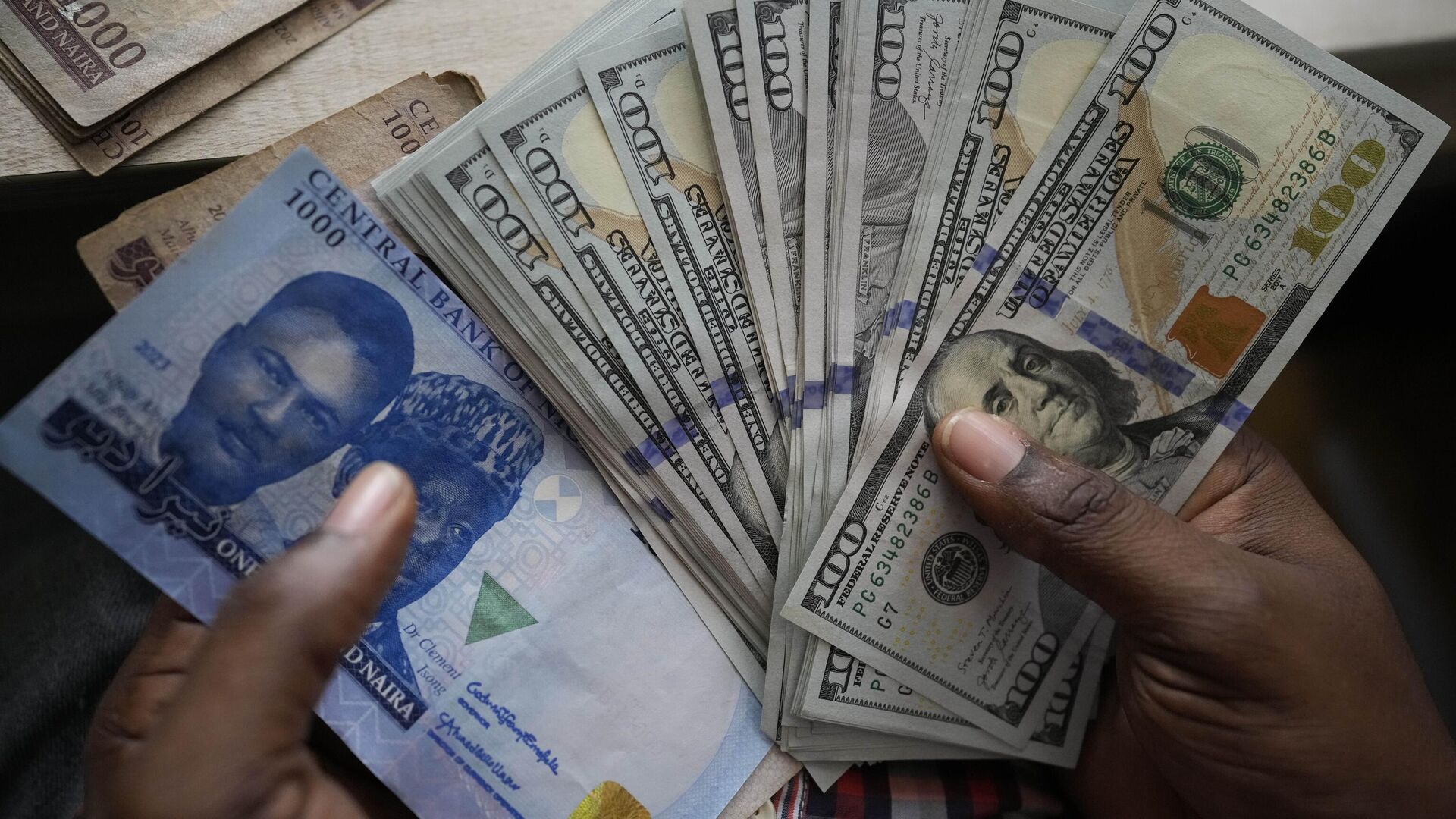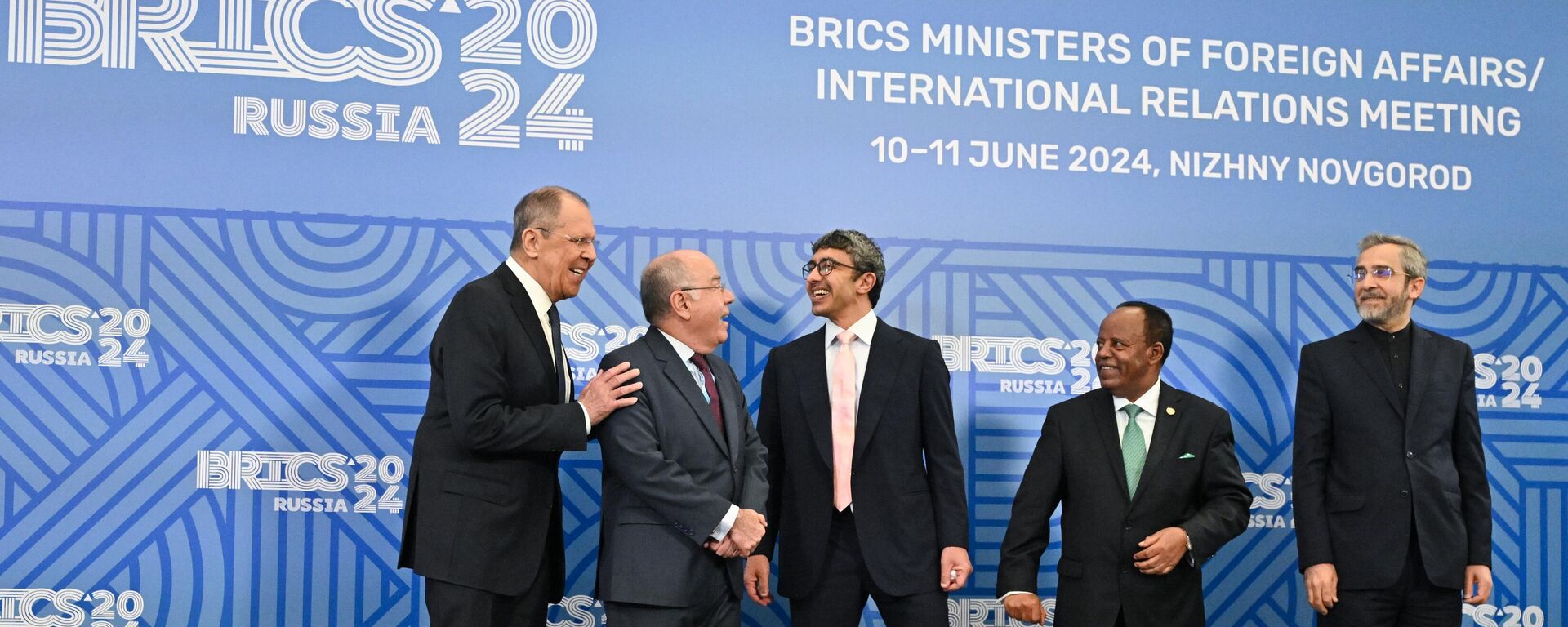https://en.sputniknews.africa/20240717/more-than-40-of-world-countries-support-de-dollarization-1067529433.html
More Than 40% of World Countries Support De-dollarization
More Than 40% of World Countries Support De-dollarization
Sputnik Africa
The de-dollarization movement has gained steam in recent years. Many countries seek to reduce their reliance on the US currency and get rid of its hegemony in... 17.07.2024, Sputnik Africa
2024-07-17T14:00+0200
2024-07-17T14:00+0200
2024-07-17T14:11+0200
javier milei
zimbabwe
china
argentina
international monetary fund (imf)
swift
currency
alternative currency
us dollar
ditching dollar
https://cdn1.img.sputniknews.africa/img/07e7/0a/1f/1063225029_0:160:3072:1888_1920x0_80_0_0_d0db5a84cd4d876128b759b9b62a1416.jpg
Almost half of the world's countries, more than 40%, have already declared a boycott of the dollar to a greater or lesser extent. Since the beginning of this year, according to Sputnik analysis, six more countries have set foot on the path of de-dollarization.All the countries can be roughly divided into three groups:Newcomers to Anti-Dollar CoalitionZimbabwe's voice is the loudest among those who have declared war on the dollar this year. The country's economy has been in fever for many years. Against the backdrop of a complete devaluation of the national currency, almost 80% of transactions on its territory were conducted in dollars. To combat high inflation and ensure financial stability, Zimbabwe announced in April the transition to a new national currency called Zimbabwe Gold, or ZiG. It is expected to become the sole means of payment in 2026.In the spring, the Maldives began pedaling away from the dollar. A representative of the country's Ministry of Economy said that the state is negotiating with India and China to convert trade settlements into local currencies to avoid paying for imports in dollars. Burkina Faso, Nigeria, the Republic of the Congo, and Sudan are also betting on greater use of local currencies in trade.Even Argentina has softened its currency rhetoric. Late last year, it looked likely that it would become the first country in 14 years to switch to the dollar as its national currency. The newly elected President, Javier Milei, was an active proponent. However, he has since revised his approach to solving the country's economic problems, saying that switching to the US currency is not the country's ultimate goal. At the same time, Argentina is actively trading in national currencies with its largest partners, such as Brazil and China.Importance of Dollar to Global EconomyDespite the fact that more and more representatives of the world community are getting on the rails of de-dollarization, the US currency continues to play a prominent role. For example, according to the latest data from SWIFT, the largest system of interbank payments, the dollar accounts for 47.89% of all payments through the system. For the nearest pursuer, the euro, this indicator is twice less – 22.85%.The dollar remains the main reserve currency; according to the latest data from the International Monetary Fund (IMF), countries keep 58.85% of their savings in this currency. However, this indicator is not at its highest level - ten years ago, it was slightly higher (63.04%).
https://en.sputniknews.africa/20240710/iran-proposes-brics-payment-system-integration-a-challenge-to-western-dominance-1067446123.html
zimbabwe
china
argentina
russia
Sputnik Africa
feedback@sputniknews.com
+74956456601
MIA „Rossiya Segodnya“
2024
Muhammad Nooh Osman
https://cdn1.img.sputniknews.africa/img/07e7/04/0a/1058467512_0:0:1280:1280_100x100_80_0_0_ec723833bcbfcaed2e21952965ad99e4.jpg
Muhammad Nooh Osman
https://cdn1.img.sputniknews.africa/img/07e7/04/0a/1058467512_0:0:1280:1280_100x100_80_0_0_ec723833bcbfcaed2e21952965ad99e4.jpg
News
en_EN
Sputnik Africa
feedback@sputniknews.com
+74956456601
MIA „Rossiya Segodnya“
Sputnik Africa
feedback@sputniknews.com
+74956456601
MIA „Rossiya Segodnya“
Muhammad Nooh Osman
https://cdn1.img.sputniknews.africa/img/07e7/04/0a/1058467512_0:0:1280:1280_100x100_80_0_0_ec723833bcbfcaed2e21952965ad99e4.jpg
javier milei, zimbabwe, china, argentina, international monetary fund (imf), swift, currency, alternative currency, us dollar, ditching dollar, de-dollarization, economy, finance, brics, brics plus, international, russia
javier milei, zimbabwe, china, argentina, international monetary fund (imf), swift, currency, alternative currency, us dollar, ditching dollar, de-dollarization, economy, finance, brics, brics plus, international, russia
More Than 40% of World Countries Support De-dollarization
14:00 17.07.2024 (Updated: 14:11 17.07.2024) Muhammad Nooh Osman
Writer/Editor
The de-dollarization movement has gained steam in recent years. Many countries seek to reduce their reliance on the US currency and get rid of its hegemony in international trade. Key players include the BRICS nations, with Russia leading the de-dollarization efforts in response to unprecedented unilateral Western sanctions.
Almost half of the world's countries, more than 40%, have already declared a
boycott of the dollar to a greater or lesser extent. Since the beginning of this year, according to
Sputnik analysis, six more countries have set foot on the path of de-dollarization.
All the countries can be roughly divided into three groups:
1.
The first and largest (112 countries) are those whose financial authorities have not openly spoken out against the dollar and have not introduced any restrictive measures. These include countries where the dollar is even used as the official currency, such as Panama, the Marshall Islands, Ecuador, El Salvador, and some other small states.
2.
The second group (31 countries) are those that are actively
switching to national currencies with their trading partners or restricting the circulation of the dollar domestically out of concern for financial stability.
3.
Finally, the remaining group (another 50 countries) are those who openly oppose the dollar and call on the rest of the world to join them in weakening its hegemony.
Newcomers to Anti-Dollar Coalition
Zimbabwe's voice is the loudest among those who have declared war on the dollar this year. The country's economy has been in fever for many years. Against the backdrop of a complete devaluation of the national currency, almost 80% of transactions on its territory were conducted in dollars. To combat high inflation and ensure financial stability, Zimbabwe announced in April the transition to a new national currency called
Zimbabwe Gold, or ZiG. It is expected to become the sole means of payment in 2026.
In the spring, the Maldives began pedaling away from the dollar. A representative of the country's Ministry of Economy said that the state is negotiating with India and China to convert trade settlements into local currencies to avoid paying for imports in dollars. Burkina Faso, Nigeria, the Republic of the Congo, and Sudan are also betting on greater use of
local currencies in trade.
Even Argentina has softened its currency rhetoric. Late last year, it looked likely that it would become the first country in 14 years to switch to the dollar as its national currency. The newly elected President, Javier Milei, was an active proponent. However, he has since revised his approach to solving the country's economic problems, saying that switching to the US currency is not the country's ultimate goal. At the same time, Argentina is actively trading in national currencies with its largest partners, such as Brazil and China.
Importance of Dollar to Global Economy
Despite the fact that more and more representatives of the world community are getting on the rails of de-dollarization, the US currency continues to play a prominent role. For example, according to the latest data from SWIFT, the largest system of interbank payments, the dollar accounts for 47.89% of all payments through the system. For the nearest pursuer, the euro, this indicator is twice less – 22.85%.
The dollar remains the main reserve currency; according to the latest data from the International Monetary Fund (IMF), countries keep 58.85% of their savings in this currency. However, this indicator is not at its highest level - ten years ago, it was slightly higher (63.04%).



